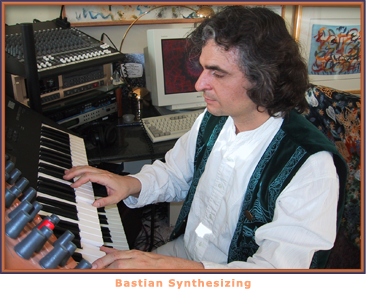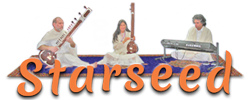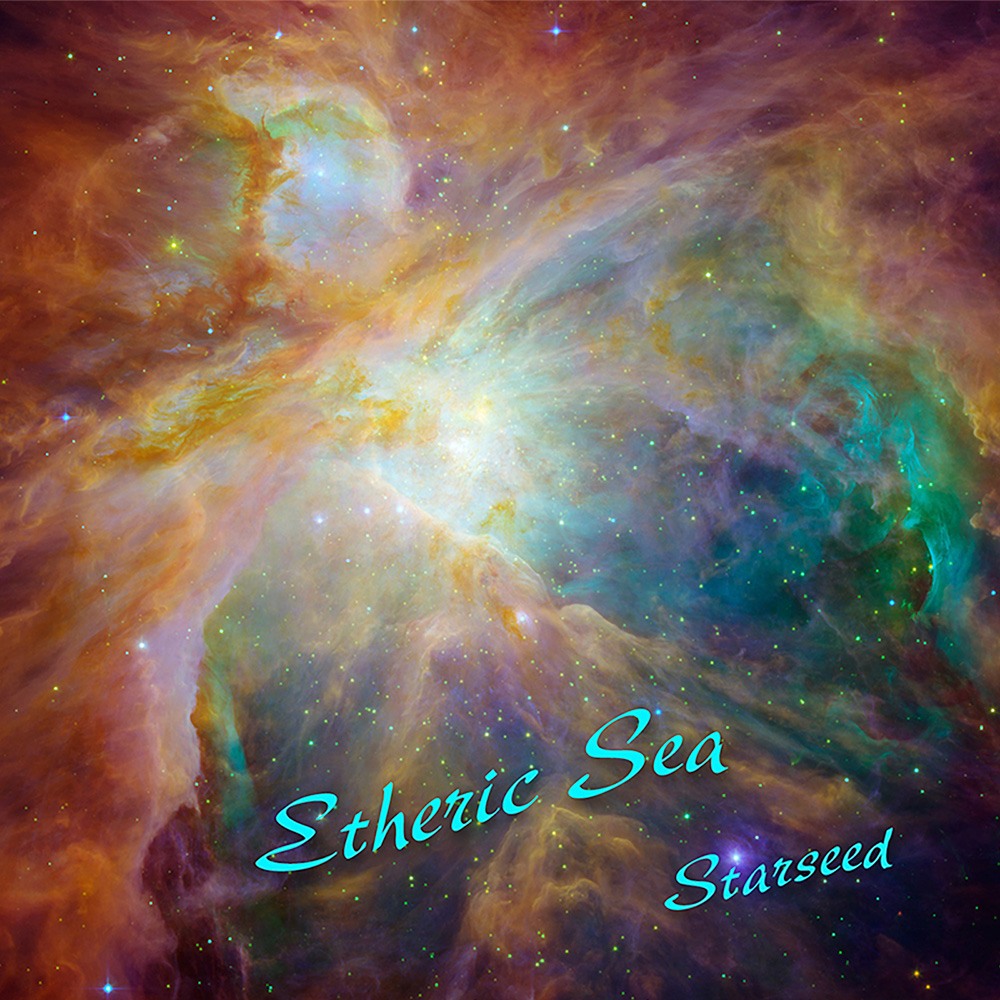Harmony of the Spheres:
The Work of Hans Cousto
Bastian Staeuber-Jermutus
While you are reading, listen to
a short sample from Etheric Sea
The notion of harmony comes from the ancient Greek word, harmonia, which primarily means properly joining or fitting things together. Harmony was a key concept of the cosmology of Pythagoras’s (580 – 500 BC). He saw the Universe (from Latin Uni = Oneness and Versum = Reflection) as a reflection of the Divine and as such as harmonious and beautiful. These harmonies could be described mathematically as whole number proportions and ratios, similar as ratios are used to describe scales and tones; this is why the late Sufi Mystic Hazrat Inayat Khan says:
“The one who knows the secrets of Sound knows the Mystery of the Universe”
Pythagoras was the first who formulated the concept of a “Harmony of the Spheres,” in which the whole cosmic plan is reflected in the laws of mathematics and music. Pythagoras was primarily a mystic, and it is said that he could tune in to the Divine and actually hear and perceive the “Harmony of Worlds.” His knowledge did not come only from logical thinking, but from his harmonious connection with the Divine. The most passionate lifelong study of the Music of the Spheres was done by Johannes Kepler (1571 – 1630), which resulted in the measurement of the exact mathematical laws which governs the motion of the planets around the sun. Kepler himself was a Mystic and Alchemist. After Kepler, other scientists, mystics and musicians used different methods to determine the sounds and harmonies of the planets, but the quest for the “Harmony of the Spheres” was always conducted by a select few insiders, and this knowledge rarely reached the mainstream.
 It is the work of Hans Cousto (born in 1948 in Switzerland, a freelance scientist, mathematician and author in the field of harmonics, now a resident of Berlin) which brought this issue back into the public eye at the end of the 20th century, and spawned new interest and research by musicians, scientist and healers. On October 2nd, 1978, Hans Cousto, after spending the day in the English Garden in Munich, later that night tapped into the same space Pythagoras and others had found before, and he perceived the Symphony of the Spheres with full color and sound. He heard and saw the sun and the planets moving in total harmony, and he envisioned the law which underlies the sounds of the planets.
It is the work of Hans Cousto (born in 1948 in Switzerland, a freelance scientist, mathematician and author in the field of harmonics, now a resident of Berlin) which brought this issue back into the public eye at the end of the 20th century, and spawned new interest and research by musicians, scientist and healers. On October 2nd, 1978, Hans Cousto, after spending the day in the English Garden in Munich, later that night tapped into the same space Pythagoras and others had found before, and he perceived the Symphony of the Spheres with full color and sound. He heard and saw the sun and the planets moving in total harmony, and he envisioned the law which underlies the sounds of the planets.
At the end of this vision he took out his pocket calculator, which was close to his bed, and tapped: 60 x 60 x 24 1/x 2 x 2 x 2 x 2 x 2 x 2 x 2 x 2 x 2 x 2 x 2 x 2 x 2 x 2 x 2 x 2 x 2 x 2 x 2 x 2 x 2 x 2 x 2 x 2 = 194.180. He looked up one of the tables in his tuning book, and there it was: the closest note he found was a G with 193.77 Hz. The sound of the Earth spinning around its axis was a G! Yes, this seems so simple, but it is profound. The heart of his vision was the understanding of the Cosmic Octave. In music, octaves are regarded as being the same tone, only proprotionally higher or lower. If you have a guitar and you play the E string, then you put your finger on the middle of the string and play, there is again the E, one octave higher. So shortening a string into its half, or doubling its length, the tone always stays the same, just an octave lower or higher. This vibration or frequency is measured in Hertz (Hz), which means the number of vibrations per second. The E string has a frequency of 329.63 Hz. The E an octave higher has a frequency of 329.63 x 2 = 659.26 Hz, and the E one octave lower has a frequency of 329.63/2 = 164.82.
There can be much said about the philosophical and esoteric implications of the octave law, as it means nothing more or less then ‘as above, so below’ and ‘Micro Cosmos equals Macro Cosmos’. Pythagoras had already proven that whatever can be said of one octave can be said of all octaves. The Earth, spinning in one day around its axis, can be said to have the frequency of one rotation per day. The day has 24 hours x 60 Minutes x 60 Seconds = 86,400 Seconds. This means it has a frequency of 1/86,400 = 0.00001157 Hz. Now, the human ear does not perceive such a low frequency, but if we octave this frequency up until we can hear it, the octave law says it still stays the tone it is. The 24th octave of the Earth rotation has a frequency of 194.18 Hz, which is close to a G.
Cousto also recognized that the chamber tone (standardized pitch or concert pitch), the frequency all instruments in the western world use to tune the instruments, is artificially created. While all systems of measurement have a base in nature (1 meter is a millions of a meridian quadrant, a cube of the side length of one tenth of a meter has the volume of 1 liter, 1 liter of water has the weight of 1 kilo gram etc . . .), the chamber tone was defined as an A with 435 Hz in France in 1859, and was confirmed in 1885 by the Vienna chamber tone conference. In 1939 in England on the 2nd chamber tone conference this tone was redefined as an A vibrating at 440 Hz. It is not known on which base this was defined, certainly it has no relation to anything found in nature. This is maybe the reason why the western world is literally out of tune with nature.
Finally, in combining modern astronomical data and the octave law, we have a tool to tune our instruments in tune or resonance (German: Einklang) with nature. So, a G at 194.18 Hz the tone of the day, which is the tone of the year, the time the Earth needs to circle the Sun. The year has exactly 365.24199 days. The calculation of 1/(365.24199 x 86400) = 0.000000031689 Hz. This is, in its 32nd octave, the tone C# at 136.10 Hz. As Cousto found out on his journeys to India, the sitar masters tune their instruments exactly or close to a C# 136.1 Hz. And they didn’t use a Korg tuner or did mathematical acrobatics, but were actually in tune with the universe. This is the higher meaning of tuning an instrument: to be attuned with the nature of reality.
The Orbits of all the planets are now known, so it is just a matter of getting the exact data and some calculations to figure out the tone of each planet. Cousto did this in all details in his first book ‘The Cosmic Octave’, published in 1984 in Germany. By 1986, as I remember, tuning forks for all the planets where available in most esoteric book shops. Charts on how to tune instruments to the particular planet frequencies where available, and are now freely distributed (in German and English) on the web site planetware.de.
Paiste, the famous Gong Company, was creating a whole product line of gongs tuned to the planets. Many more companies would produce tuning forks, wind chimes, singing bowls with tones based on his calculations. Healers use these tuning forks to stimulate specific acupuncture points, or use signing bowls and crystal bowls to bring these frequencies into specific parts of the aura and body. Joachim-Ernst Berendt, the famous German musicologist and author (Nada Brahma: The World of Sound), with his specially built Monochord created a series of recordings – each peace playing only one pitch of the planet series. These recordings were used for research projects to see what effect these specific tones have. For example, music tuned to the tone of the day, G – 194.18 Hz, has a dynamic character, and has a stimulating and activating effect. Its color is orange. The scientist Fritz Popp measured the maximum resonance of DNA in the area of 351 nanometer. This translates into 194.33 Hz at 66 octaves lower, very close to this tone. This tone is well suited for many body healing modalities, day to day activities, as well as being erotically stimulating. It stimulates the Muladhara – base chakra. The tone of the year, C# 136.10 Hz, is also called the “Om Tone,” because many masters in India perceive this tone as the primordial sound of the universe, which is referred to as Om. This frequency is used to tune the instruments for Indian temple music. It is called Sadja, or Sa, the base tone of the Sitar and Tamboura. Using this tone brings one in resonance with the Indian masters and the Om. It is good for meditation (and good for the soul) as it is soothing and reduces stress. The Om Tone stimulates the Anahata – heart chakra. The Om Tone is also the tone of the Platonic year. This is based on the 25,920 year cycle of the precession of the Equinoxes. In the 48th octave, this is the tone F with 172.06 Hz. Meditation music that is attuned to this tone can be very effective for a spiritual path, and leads away from physical and psychic regions, and towards the spheres of spirit. It stimulates the Sahasrara – crown chakra.
There are several moon tones, there is a sun tone, the tones for all of the planets. In general, Cousto always recommends experimenting with these tones for yourself, and seeing what effect they have for you. The Octave Law need not only be used for the macro cosmos, but also for the micro cosmos. Through spectrum analysis, for example, the resonance spectrum for specific substances can be detected. These resonance values are wavelengths of visible light, and are measured in nanometers. These wavelengths can be expressed as frequencies, and then octaved into frequencies we can hear. Cousto did this for the hydrogen molecule, but also for some psychotropic substances and plants. Out of these frequencies, which are unique for each plant or molecule, whole new tuning models can be created. To make music based on the planet tones requires retuning the musical instruments – usually a “cent” value has to be calculated by which the base A440 has to be detuned in order to get the tone desired. For example, to get a C# 136.1 Hz, the A440 has to be detuned to 432.1 Hz or -34.1 cent. Then the C# will be an octave of 136.1 Hz. Since tempo is measured in beats per minute, every frequency can be transformed into bpm by multiplying it by 60. In our example: 136.1 x 60 = 8166 bpm. Since this is a bit fast, we just octave it down until we have a beat we can actually play: 8166 /2 /2 /2 /2 /2 /2 /2 = 63.8 bpm. So using a tempo of 63.8 bpm will bring the tempo in tune with the year tone. Similarly, the exact value for binaural beats can be calculated. The goal is to have as many frequencies as possible expressed as an octave of the planet’s tone. Then, without doubt, it is best to use a ‘pure’ scale, such as the Just scale or Pythagorean scale for playing the music, so that all notes played have a harmonic relationship to the planet’s base frequency. Tables with all these values calculated are freely available on the Planetware website mentioned above.
 There are several musicians and groups who are dedicated to making music on these principals. Most notable are the ‘pure’ tones from Joachim Ernst Berendt called “URTONE”, played on a monochord, as well as the music of Rainer Tillmann (singing bowls), and Jens Zygar (gongs). In the area of planetary trance and ambient music, listen to Akasha Project, Star Sound Orchestra, Steve Schroyder (formally of Tangerine Dream), B.E.L (Brain Entrainment Laboratory), and also well worth mentioning is Cousto’s latest project: the Klangwirkstoff Record Label (there are by now 5 CD’s). Many more examples are available on the Planetware web site.
There are several musicians and groups who are dedicated to making music on these principals. Most notable are the ‘pure’ tones from Joachim Ernst Berendt called “URTONE”, played on a monochord, as well as the music of Rainer Tillmann (singing bowls), and Jens Zygar (gongs). In the area of planetary trance and ambient music, listen to Akasha Project, Star Sound Orchestra, Steve Schroyder (formally of Tangerine Dream), B.E.L (Brain Entrainment Laboratory), and also well worth mentioning is Cousto’s latest project: the Klangwirkstoff Record Label (there are by now 5 CD’s). Many more examples are available on the Planetware web site.
I would like to thank Hans Cousto for taking his time to discuss these matters with me. I also would like to thank David Gibson and Randy Masters, whose teaching enabled me to get a deeper understanding of music, sound, and the underlying nature of harmony and resonance.
April, 14th, 2008 Bastian Staeuber-Jermutus
This paper was written as part of the Sound Healing Certificate Program at the Sound and Consciousness Institute.


